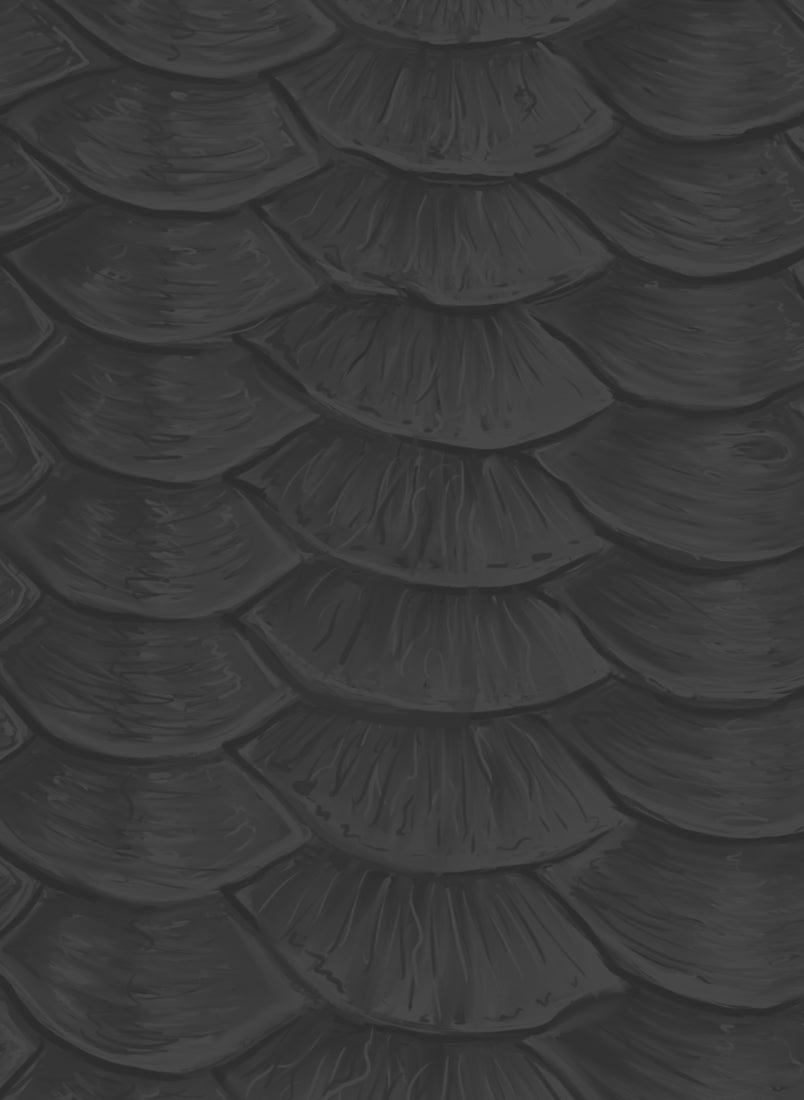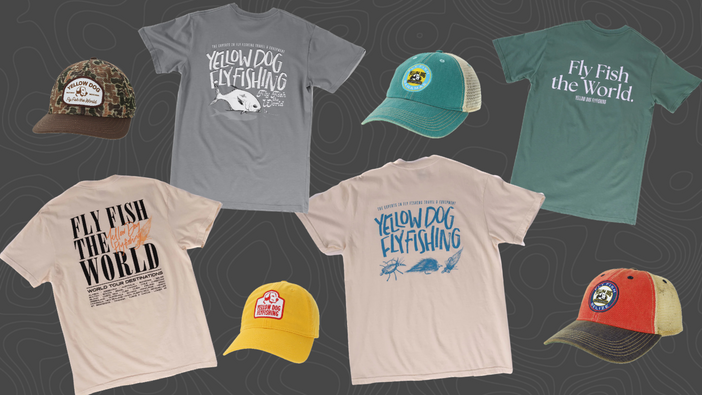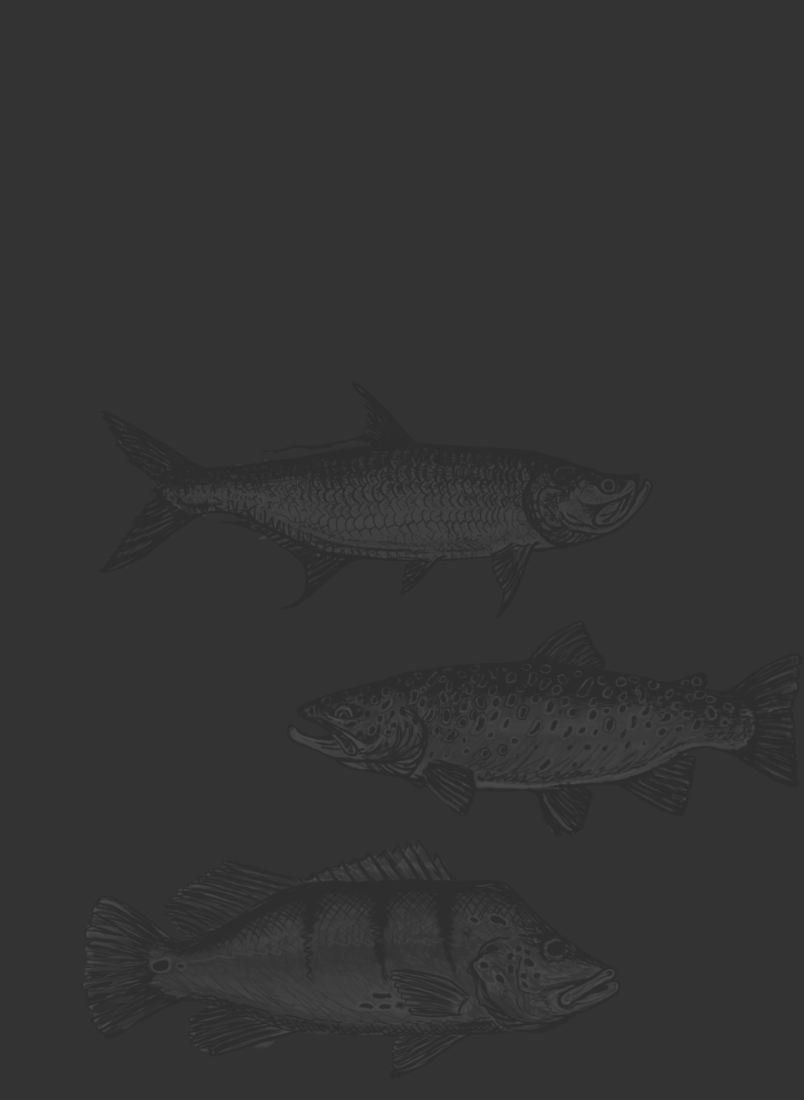The 5-Weight Fly Rod: A Versatile Tool for Every Angler
In freshwater fly fishing, the 9-foot 5-weight fly rod is the most popular and versatile option in an angler’s arsenal. A 5WT is often considered the “jack-of-all-trades” for trout fishing, and if you're just getting into the sport, is the first rod an angler should buy. While there are many scenarios where a 5-weight simply isn't the right tool, it is the first and favorite hammer you reach for in a wide range of applications.
As an angler develops more skills, fishes more dynamic and technical trout fisheries, or requires a specialized rod for specific techniques, conditions, or scenarios, they will need to add more rods to their collection. However, the 5-weight is the multi-tool that gets the job done a majority of the time and remains the most popular freshwater rod size for a reason.
Why a 5-Weight?
Best For:
- Nymphing and dry fly fishing for brown, rainbow, brook trout and grayling
- Small streamers
The reality of all fly rods is that you can’t have your cake and eat it too. By that we mean, you can’t have the world’s best dry fly rod and streamer rod wrapped up in one. A dedicated dry fly rod is smoother casting and responsive, bends deep, and generates slower line speed for the subtlest of presentations and optimal line control. A dedicated streamer rod is going to be heavier, faster, and generate higher line speeds for casting at distance and turning over larger, heavier flies, ultimately sacrificing the finesse dry fly presentations demand. But not all of us need or are ready to have a rod for every scenario, and that is where the 9’ 5-weight excels. Envision a judges panel, and each judge is voting on the three primary techniques of freshwater fly fishing for trout: nymphing, dry flies, and streamers. The 5-weight, while by no means an exceptional streamer rod or the “perfect” small stream dry fly rod, does score the highest cumulative score when lined up with other rod sizes.
Watch Now: Fly Rods and Reels for Fly Fishing the U.S. Rockies
-
Nymphs & Dry-Dropper: A 5-weight wins out over lighter and heavier rods in most nymphing and dry-dropper scenarios. Some anglers choose to use a lighter setup, especially if they are tight-lining or euro-nymphing and want more sensitivity out of a rod for strike detection. However, a 5-weight is well-suited for handling anything from light-to-medium weighted nymph rigs with an indicator, as well as most any dry-dropper setup without sacrificing feel or line control.
-
Dry Flies: A medium-fast or fast 5-weight shines in most dry fly scenarios, ranging from tiny size 20 tricos on the Missouri River to size 6 hoppers in the backcountry of the Yellowstone. As we mentioned earlier, is a 9-foot 5-weight the single BEST rod size for technical dry fly fishing on places such as the famous DePuy Spring Creek? No, and hopper fishing on big rivers is frankly easier with a 6-weight. However, you might not need a rod for those situations, and most 5-weights can adapt between these techniques with changes to your leader system or potentially a fly line swap.
- Streamers: This is where 5-weights struggle, as larger, heavier flies require rods and lines with more turnover power. A 5-weight still performs well with small to medium-sized streamers on small to medium-sized rivers (with the right fly line). Once you start needing to carry long, heavy flies at distance, likely with the use of a streamer-specific fly line, a 5-weight is not going to cut it. However, where a 5-weight really shines is that you can easily snip off your nymph rig, shorten your leader, and tie on a fly like a zonker or kreelex minnow without bringing along an extra rod and reel setup.
You should note that pairing your rod with the right line is crucial to getting the most out of your 5wt. Pair your rod with a general, all-purpose line, frequently advertised as an "all-around" or "go-to" fly line. Their tapers are designed for casting a wide range of fly sizes and will ultimately allow you to get the most out of your rod. Alternatively, if you are going to be doing very little dry fly fishing, you could opt for a line with a heavier head for helping to turn over streamers, nymph rigs, and terrestrials.

Where a 5-Weight Falls Short
-
Trophy Fish: On your average trout fishery, a 5-weight is all you need. However, if you are somewhere like New Zealand, where you are fishing for above-average trout and frequently required to make long casts, you will need more backbone. As a very loose rule, anything pushing two feet or greater and you should consider sizing up.
-
Big Water: A 9' 5-weight isn't going to be your best option for big rivers like those found in our backyard. If you're fishing large western rivers like the Yellowstone, a 6-weight is going to be a better option for mending and handling heavy indicator setups.
-
Heavy Wind: It is this simple – the windier it is, the harder it is to cast (especially at long distances). By increasing your rod and line weight, you can better tame the wind. For this reason, anglers traveling to destinations such as Patagonia, where wind is common, should consider a 6-weight.
-
"Throwing Meat": If you’re fishing with large, articulated streamers, you need a heavier setup for effectively casting and turning over those patterns. Many anglers prefer a 6 or 7-weight for dedicated streamer fishing with large flies and sinking lines.
-
Euro Nymphing: You certainly can tight-line nymph with a 9' 5 Weight, but it simply isn't the right tool for most euro-nymphing scenarios. Euro rods are longer, lighter, and have a soft tip for optimal line control and hyper-sensitivity, allowing anglers to detect the most subtle of strikes.
- Excessive Casting: If you are going on a destination fly fishing trip -- say somewhere like Alaska -- where you are going to be making a lot of casts and fighting a lot of fish over the week, size up to a 6 or 7-weight to protect your shoulder. While the first day might be a lot of fun, by day three or four the aches will be setting in!

Recommended 5-Weight Fly Rods
For an all-purpose 5-weight, most anglers are going to want a medium-fast to fast-action rod. These rods are designed to balance power and finesse, so you can turn over a heavy nymph rig while also gently laying down a single dry fly.
With countless options on the market, choosing the right 5-weight can be daunting. Below are some excellent "all-around" options over a wide range of budgets.
Premium Options
Orvis Helios 4D
Touted as the world's most accurate fly rod, the Helios 4D is a pretty incredible stick. Lightweight and incredibly responsive, the Orvis Helios 4D is built for precise casting and powerful delivery and works well across streamers, nymphs, and dries. If you are going to lean more toward delicate presentations and want a bit more feel in your cast, opt for the Helios 4F.
Sage R8
A very accurate, lightweight rod that handles all walks of flies. Plenty of feel in the cast without sacrificing power, and handles everything from small dries to streamers with ease. There are "punchier" rods on the market, but the R8 is a lot of fun to cast.
Winston Air 2
Known for its buttery smooth casting, the Winston Air 2 is a fast action rod that excels in dry fly fishing but handles nymph rigs and streamers when it needs to. Winston's focus on finesse makes it a favorite amongst anglers who like a premium, U.S.-made rod with plenty of feel and enjoy the art of casting.
Scott Centric
The Scott Centric is a premium rod known for its fast action, super fast recovery speed, and accuracy in both short and long-range casting, making it a great all-around rod. The Centric is an excellent choice for anglers who want precision casting with dries, but also want to be able to easily mend heavy nymph setups on big water or fish small streamers.
Hardy Marksman
The 9' 5-Weight Marksman was designed to excel across many scenarios, except for heavy streamers. Featherlight, accurate, and very precise, this is another premium option for anglers who want to invest in a workhorse 9' 5-weight.
Thomas & Thomas Avant II
Thomas & Thomas is known for making high-end, beautiful rods and the Avant II is no exception. It is a fast action rod with a smooth feel, and is a joy to cast at short and long distances.
G. Loomis NRX+
Another rod designed with the all-around approach in mind, the NRX+ throws powerful, tight loops at distance and is one of the fastest/most powerful of the bunch. Despite this, it still handles up close really well with nymph rigs or tight dry fly scenarios, but it will certainly appeal to anglers who prefer a faster casting stroke.
Budget-Friendly Options
Echo Carbon XL
The Echo Carbon XL is an affordable, high-performing option. With a medium-fast action, it’s forgiving and great for beginners or budget-conscious anglers.
Orvis Clearwater
The Orvis Clearwater is a reliable entry-level rod that performs well across various fishing techniques. Its medium-fast action offers a good mix of power and flexibility. These are good rods for the price, and Orvis offers an exceptional warranty.

When you are purchasing a new rod, the first question should always be: What is this for?
Do you need a specialized rod for a specific tactic or fishery, or a utility rod that can do most things well? At the end of the day, a 5-weight fly rod is an essential tool for every angler, offering unmatched versatility and performance across a wide range of fishing scenarios. Whether you’re fishing the evening spinner fall, indicator fishing with a heavy nymph rig, hitting the bank with terrestrials during the heat of summer, or streamer fishing on your local river, the 9-foot 5-weight can deliver. Are there other freshwater fly rods you should consider and will eventually want or need? Absolutely, but this is what you might consider a "non-negotiable," and a great starting point for any new fly fisherman.
Choosing a Fly Rod Series:
Gear Guides:





























